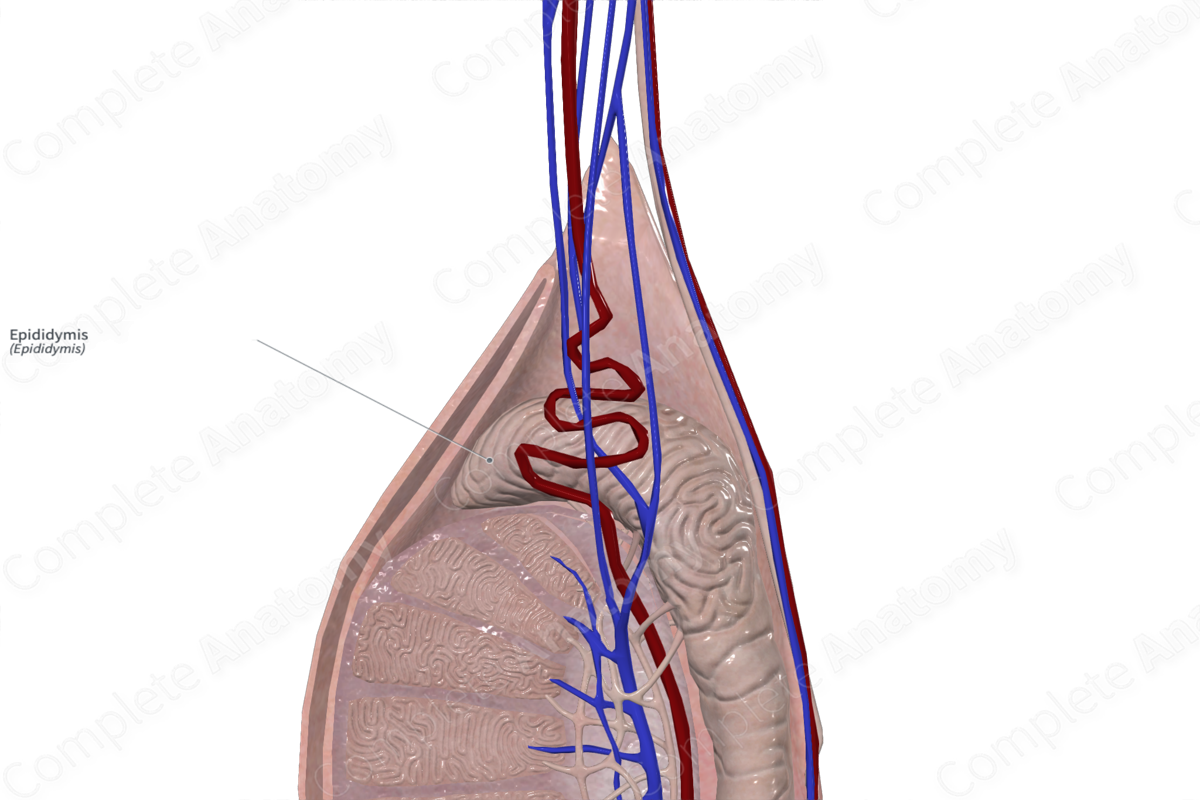
Epididymis Structure/Morphology
The epididymis is a highly convoluted structure, measuring up to seven meters long (Standring, 2016). Anatomically, it is divided into a head, body, and tail region. The head is connected to the efferent ducts of the testes, through which primitive spermatozoa (immature sperm cells) travel to enter the epididymis. Distally, the tail is continuous with the ductus deferens.
Related parts of the anatomy
Epididymis Key Features/ Anatomical Relations
The epididymis is attached to the posterior aspect of the testis and is covered in tunica vaginalis. The sinus epididymis separates the epididymis from the testis.
Epididymis Function
The epididymis serves to store and facilitate the maturation of spermatozoa (immature sperm cells). During ejaculation, sperm is transported from the epididymis by peristalsis, via the ductus deferens, towards the prostatic urethra. Here, seminal fluid produced in the seminal gland, travels to the prostatic urethra, via the ejaculatory duct. Sperm and seminal fluid mix to form semen, which leaves the body via the external urethral orifice.
Epididymis References
Standring, S. (2016) Gray's Anatomy: The Anatomical Basis of Clinical Practice. Gray's Anatomy Series 41 edn.: Elsevier Limited.
Learn more about this topic from other Elsevier products
Epididymis

The epididymis is a tube located at the back of the testicles that stores and carries sperm.




